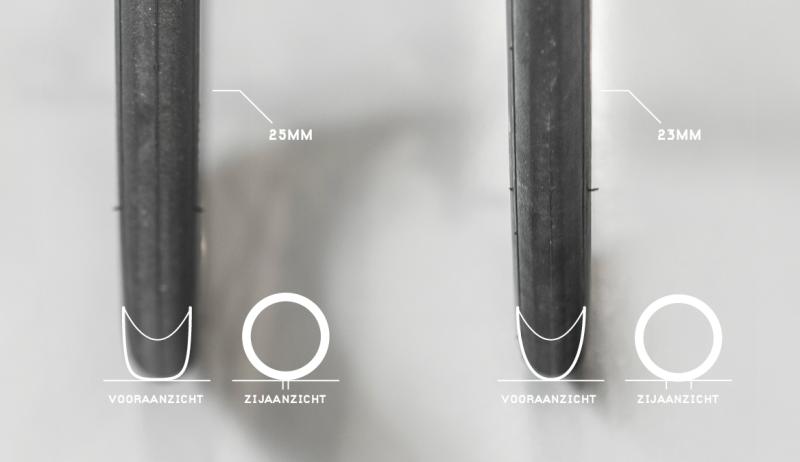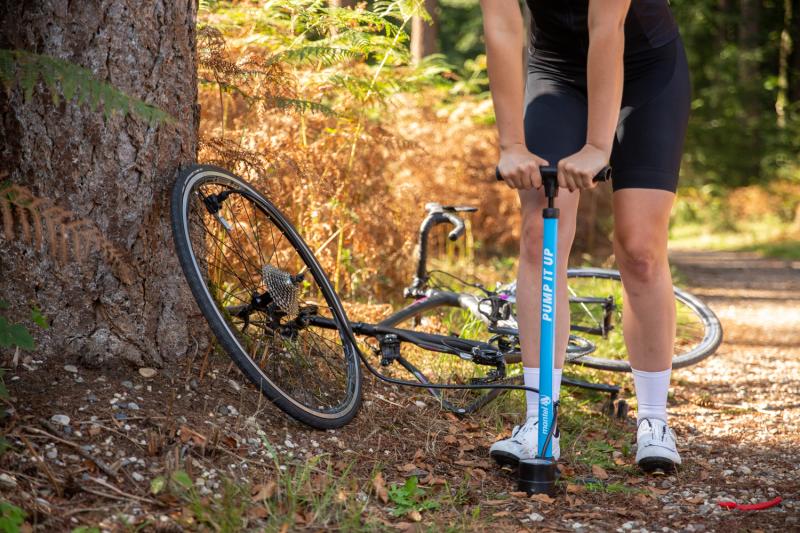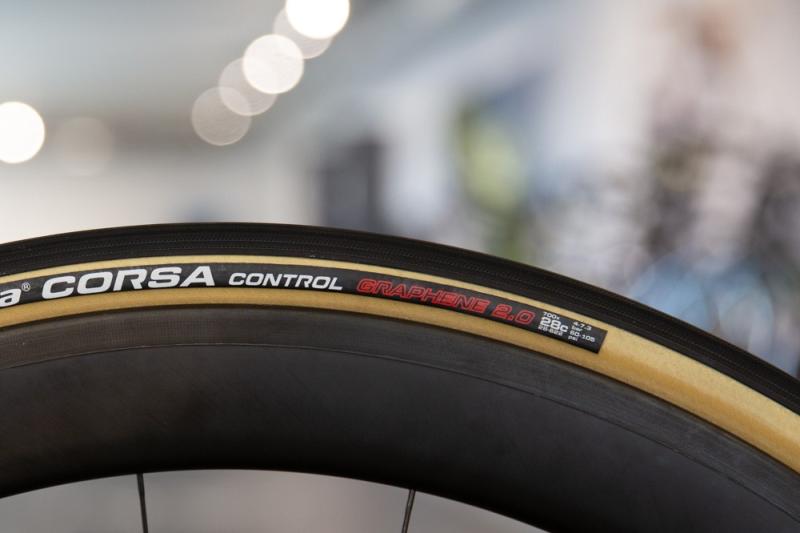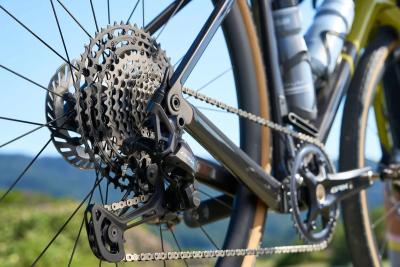Road bike tyre pressure & tyre width: what to choose?
Tyre width and the right tyre pressure, two important considerations in the world of cycling. Where in the past we rode narrower tyres at higher pressures, today we're seeing a completely different trend. Namely narrower tyres and fewer bar. In this blog we'll help you with choosing the right tyre pressure and tyre width for your road bike.
Road bike tyre widths: the difference between 23, 25 and 28mm
These days you have a choice between narrow or wide road bike tyres, from 23 mm up to a much as 36 mm. The most popular widths are the 23, 25 and 28 mm. 23 mm tyres are still sold for older model road bikes, where a wider tyre cannot fit in the frame. In recent years 25 mm has come to be seen as the standard road bike tyre width, although we're starting to see a shift towards the 28 mm. The wider road bike tyres offer a low rolling resistance, and increased comfort and grip so that you can enjoy many comfortable cycling miles.

Comfort
And there's good reason for the current trend towards 25, 28 mm or sometimes even wider rubber. The use of increasingly stiff materials, like carbon, has meant a sacrifice on comfort for road bikes. The steel frames and leather saddles of old were not designed for speed, but they certainly did help absorb some of the vibrations from bad road surfaces.
Riders exhausted by road surface vibrations will always perform more poorly. The solution is increased comfort from a wider tyre. And tyres aren't just growing in width but in height too. Because of this road bike tyres have a larger air chamber and so more space to flex and compress, resulting in improved comfort. Pro cyclists therefore note a big difference between 23, 25 and 28 mm tyres.

Contact patch
So wider tyres are more comfortable. Another advantage is that there is no noticeable difference in rolling resistance in comparison to narrower tyres. Specifically, the contact patch of a wider tyre is not bigger than that of a narrower tyre, it is only shaped differently. A narrower tyre has a long, narrow contact patch. The wider the tyre, the shorter and wider the area which has contact with the road surface. The amount of rubber that meets the road is therefore not more, it's just more favourably distributed.
It obviously important to take the width of the rims on your wheelset into account. At the moment manufacturers are producing wheels with wider rims. On these rims a 25 or 28 mm tyre fits better and, because of its characteristics, performs better too. Pay attention - a 28 mm tyre won't fit in the fork of an old road bike.
The cons of wider road bike tyres
While wider road bike tyres have many advantages, they have their disadvantages too. A wider tyre is generally heavier than a narrower tyre. In addition, there are aerodynamic disadvantages, particularly on older bikes with narrower rims. Wider tyres also don't fit in every frame.

What's the right tyre pressure for my road bike?
But how much pressure do your tyres actually need? The right tyre pressure is important for control and comfort, as well as for avoiding punctures. If you ride a 25 or a 28mm tyre, you need more tyre pressure than with a 23 mm. Higher tyre pressures generally ensure a lower rolling resistance, less wear and less chance of getting a puncture. Lower tyre pressures offer better comfort and more grip. But before you rush off to inflate your tyres, it's a good idea to check the min and max pressure recommendations, written on the sidewall of your tyres.

Pumping too little air into your tyres? The risk of wear is much higher. You must also be careful not to make your tyres too hard. A too hard tyre will give a lot of feedback, causing you to bounce around reducing your grip, control and comfort. The perfect tyre pressure is hard to determine. It's largely dependent on tyre width, conditions (weather and surface) and the weight of the rider.
Road bike tyre pressure by tyre width
The table below shows recommended pressure in bar according to tyre width and rider weight. Naturally these are just guidelines and your ideal pressure can always be higher or lower. Do you ride tubeless? Then you can run your tyres at lower pressures. For this, use the recommended pressure in the table below but subtract 1 bar for tubeless. Want to know how to do a tubeless conversion on your road bike? Then read our blog.

| Tyre Pressure (bar/PSI) | Rider weight (kg) | ||||||
| Tyre Width | <55 | 60 | 65 | 70 | 75 | 80 | 85+ |
| 23 mm | 6,4 | 6,8 | 7,2 | 7,6 | 8,0 | 8,4 | 8,8 |
| 25 mm | 5,6 | 6,0 | 6,3 | 6,7 | 7,0 | 7,4 | 7,7 |
| 28 mm | 4,8 | 5,1 | 5,4 | 5,7 | 6,0 | 6,3 | 6,6 |
| 30 & 32 mm | 4,0 | 4,3 | 4,5 | 4,8 | 5,0 | 5,3 | 5,5 |
Pay attention! Make sure that you always remain within the min and max tyre pressure limits written on the sidewall of your tyre.
Use a good bike pump to ensure the correct tyre pressure
It's a good idea to regularly check your bike for stones and cracks. To do this completely deflate your tyre, that way it's easier to see if there's any nonsense in it. It's also advisable to check your tyre pressure every week. With a good floor pump you'll quickly have your tyres inflated to the correct pressure. A high pressure pump is most suitable for road bike tyres, because it can generate the high pressures needed.

We also recommend getting a bike pump with a pressure meter display so that you can always get an exact pressure reading for your tyres.
Which tyre width is suitable for my road bike?
For years we've happily ridden on 23 mm tyres. Once you've experienced the comfort and the road handling characteristics of a wider tyre, you often don't want to go back. Do you ride wider tyres? Share your experience of the differences between 23, 25, and 28 mm tyres!
Eva van den Berg
Since starting work at Mantel, I’ve been reading and writing about bikes on a daily basis. This added to the fact that I am testing new products, has caused me to get excited to expand my own bike collection. I wonder what the inside of my garage will look like in a few years. Luckily I have a big garage at home!
Related posts

Gift ideas for Christmas: a perfect present for every cyclist!
8 December 2023Gift ideas for Christmas: a perfect present for every cyclist!The Christmas holidays are just around the corner! If you ...

What winter cycling gear do I need for which temperature? [Buyer's Guide]
18 October 2023The leaves on the trees are slowly turning shades of red and yellow ...

Shimano Launches New Mechanical 12-speed Gravel GRX 820 and 105 R7100 Road Bike Groupsets
31 August 2023The cycling world is constantly innovating to improve performance and the cycling experience ...
 Nederland
Nederland België
België Deutschland
Deutschland United Kingdom
United Kingdom Finland
Finland Ireland
Ireland Luxembourg
Luxembourg Portugal
Portugal Poland
Poland Österreich
Österreich France
France España
España Italia
Italia Sverige
Sverige Danmark
Danmark










































































































































































































































